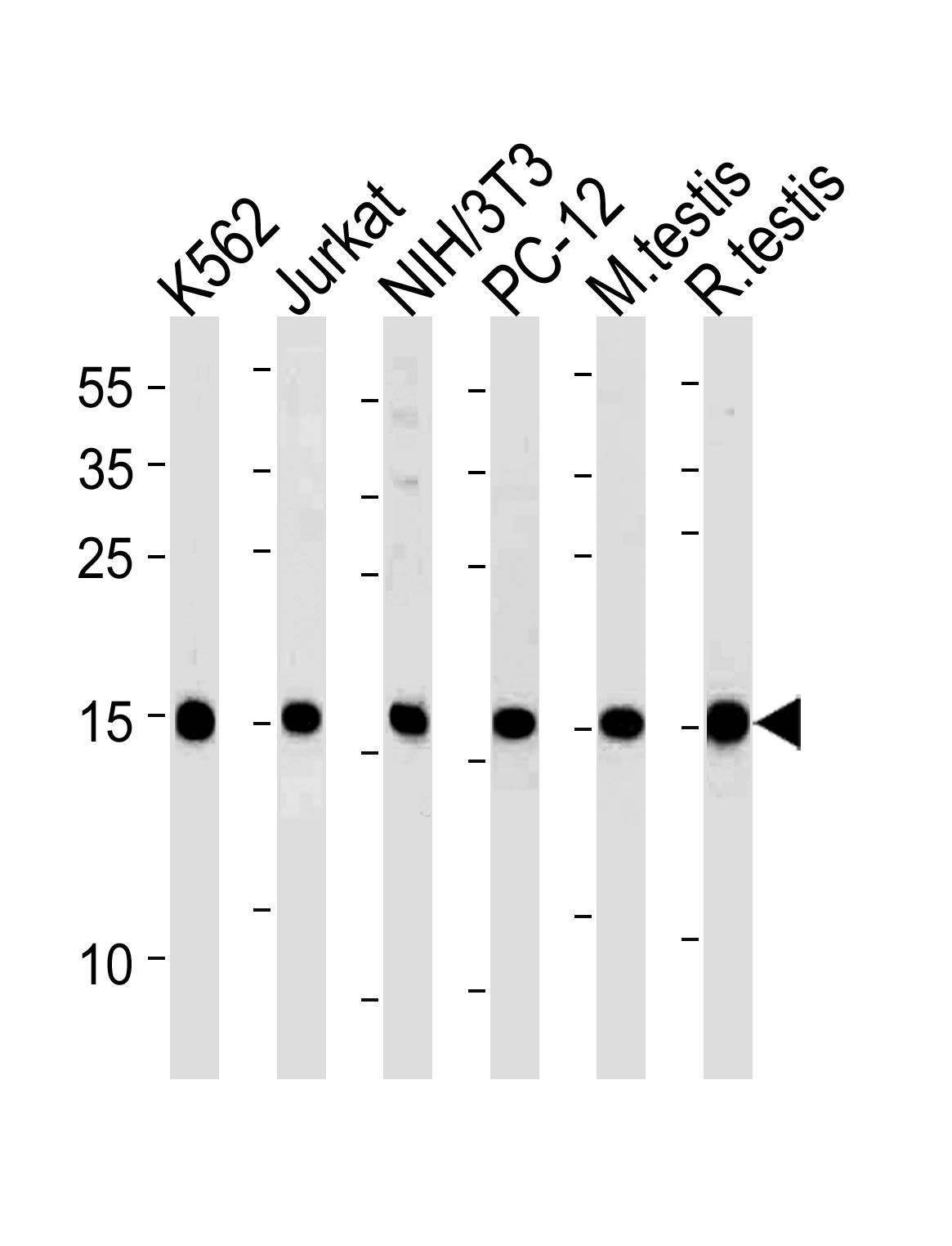产品名称
UBE2L3 Rabbit Polyclonal Antibody (C-term)
别名
Ubiquitin-conjugating enzyme E2 L3, L-UBC, UbcH7, Ubiquitin carrier protein L3, Ubiquitin-conjugating enzyme E2-F1, Ubiquitin-protein ligase L3, UBE2L3, UBCE7, UBCH7
存储缓冲液
Purified polyclonal antibody supplied in PBS with 0.09% (W/V) New type preservative N. This antibody is purified through a protein A column, followed by peptide affinity purification.
Human Gene ID
NP_001243284.1;NP_001243285.1;NP_003338.1
Human Swissprot No.
P68036
特异性
This UBE2L3 antibody is generated from rabbits immunized with a KLH conjugated synthetic peptide between 106-135 amino acids from the C-terminal region of human UBE2L3.
稀释度
IHC-P~~1:100~500;WB~~1:1000
运输及保存条件
Maintain refrigerated at 2-8°C for up to 2 weeks. For long term storage store at -20°C in small aliquots to prevent freeze-thaw cycles.
背景介绍
The modification of proteins with ubiquitin is an
important cellular mechanism for targeting abnormal or short-lived
proteins for degradation. Ubiquitination involves at least three
classes of enzymes: ubiquitin-activating enzymes (E1s),
ubiquitin-conjugating enzymes (E2s) and ubiquitin-protein ligases
(E3s). This gene encodes a member of the E2 ubiquitin-conjugating
enzyme family. This enzyme is demonstrated to participate in the
ubiquitination of p53, c-Fos, and the NF-kB precursor p105 in
vitro. Several alternatively spliced transcript variants have been
found for this gene.
组织表达
Ubiquitous, with highest expression in testis.
功能
Ubiquitin-conjugating enzyme E2 that specifically acts with HECT-type and RBR family E3 ubiquitin-protein ligases. Does not function with most RING-containing E3 ubiquitin-protein ligases because it lacks intrinsic E3-independent reactivity with lysine: in contrast, it has activity with the RBR family E3 enzymes, such as PRKN and ARIH1, that function like RING-HECT hybrids. Accepts ubiquitin from the E1 complex and catalyzes its covalent attachment to other proteins. In vitro catalyzes 'Lys-11'-linked polyubiquitination. Involved in the selective degradation of short-lived and abnormal proteins. Down- regulated during the S-phase it is involved in progression through the cell cycle. Regulates nuclear hormone receptors transcriptional activity. May play a role in myelopoiesis.


